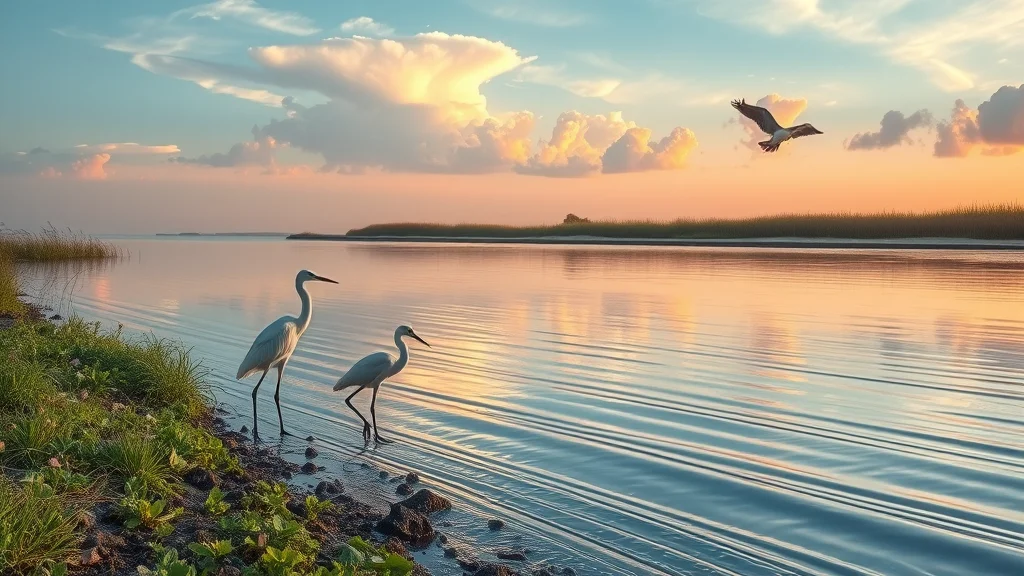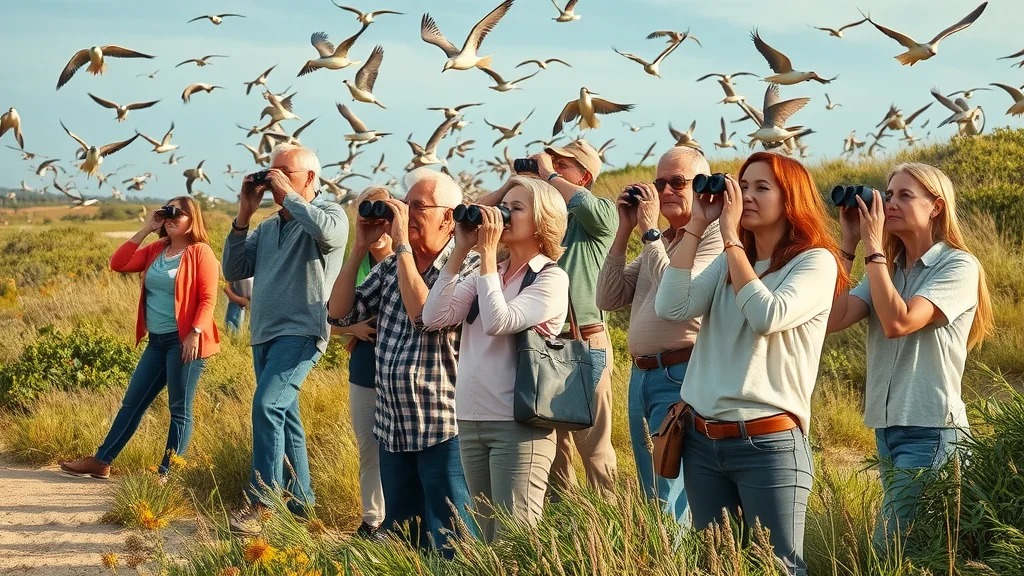Introduction: The Ticking Clock for Endangered Bird Habitat
Each year, the world’s bird population faces mounting threats, from rapid habitat loss to the shifting climate. For many endangered species, their last safe havens lie within the protected boundaries of our parks and reserves. But what happens when these sanctuaries, like those in California, are pushed to their limits? The spectacular biodiversity found in places such as Border Field State Park Beach is often overlooked—yet these landscapes are critical not only for the rare birds that live there but for the entire web of life that depends on them. The urgency to protect such habitats grows stronger as development and environmental pressures intensify, making awareness and action more crucial than ever.
The concept of endangered bird habitat reaches beyond simply preserving picturesque coastal stretches or forest groves. It’s about ensuring the health of entire ecosystems, maintaining a balance that supports not only rare avian species but also the complex community of plants, insects, and mammals with which they interact. As threats like wildfires, drought, and climate change increase, preserving these habitats becomes a question of legacy—what will future generations inherit if steps aren’t taken now? This article delves into the intricate value of endangered bird habitats, exploring the stakes of preservation, the hurdles to access and inclusion, and the broader impact on human health and inspiration. Understanding why these areas matter isn’t just about birds—it’s about the survival and well-being of us all.

The True Significance of Endangered Bird Habitat: More Than Safe Havens
Endangered bird habitats are essential ecosystems that serve as critical lifelines for species teetering on the brink of extinction. Far from being mere refuges, these habitats are dynamic environments that make everything from pollination to pest control—and even seed dispersal—possible within the greater landscape. By safeguarding such places, conservationists protect far-reaching ecological processes that support agricultural productivity, clean air, and water resources, enriching both natural biodiversity and human society.
However, the story doesn’t end with birds alone. Endangered species act as powerful indicators of environmental health; when their habitats falter, broader ecological decline often follows. Yet, public understanding of this intricate relationship remains limited. Many people are unaware that a single lost bird habitat could cascade into reduced biodiversity, increased pest outbreaks, and loss of seed-propagating species critical for forest regeneration. The challenges California faces—wildfires, drought, relentless climate swings—further jeopardize these vital spaces. Lack of knowledge and urgency among the public can allow these threats to grow unchecked, leading to a future where the unique chorus of native birds fades to silence. Now more than ever, a collective understanding and response is needed to preserve these essential sanctuaries for both wildlife and people.

How Preserving Endangered Bird Habitat Translates Into Real-World Benefits
Drawing from the principles prioritized by California State Parks, habitat preservation is woven into a broader mission: sustaining biodiversity, fostering public inspiration, and ensuring equitable access to nature for all. Protecting endangered bird habitat yields immediate, tangible benefits. Beyond preventing extinctions, these preserved spaces serve as natural classrooms and recreational sanctuaries, where people can witness the profound beauty and complexity of avian life, while enjoying the restorative power of the outdoors.
With protected habitats like those found at Border Field State Park Beach, the advantages multiply: the landscape becomes a living shield against environmental stressors, illustrates resilience in the face of wildfires and drought, and supports the wellness of communities who visit for inspiration and education. Avian diversity is a cornerstone of California’s extraordinary biological variety, and its preservation strengthens ecological stability, tourism, and even climate adaptability. Ultimately, a healthy bird population reflects healthy humans, with thriving habitats delivering clean water, air, and open spaces for all.
Facing Change: How Climate and Access Shape the Future of Bird Habitats
The tides of climate change present perhaps the most formidable challenge to endangered bird habitat across California. As state parks face the direct consequences of wildfires, drought, and rising sea levels, the imperative for sustainable solutions grows ever more pressing. These impacts reshape landscapes—sometimes permanently—altering food availability, nesting grounds, and migratory stopovers essential to bird survival. Effective stewardship now requires nimble adaptation, forward-thinking planning, and a deep commitment to resilience in conservation efforts.

At the same time, ensuring access to such vital habitats requires a thoughtful balance. Programs dedicated to expanding outdoor recreation, accessibility, and community relevance—core missions for California State Parks—mean that more diverse groups can witness, and participate in, the value of conservation firsthand. When people experience the unique atmosphere of preserved spaces like Border Field State Park Beach—listening to birdsong at the Tijuana River’s mouth or hiking through secluded stretches—they become invested in their continued survival. Inclusion and access are as pivotal as policy in turning preservation into public movement.
Why Community Engagement is Key to Preserving Endangered Bird Habitats
The preservation of endangered bird habitat depends not only on legislation and designated parklands but also on the involvement of local communities and visitors. California State Parks’ philosophy emphasizes health, inspiration, and education as central pillars for public engagement. Initiatives such as state-wide photo contests and cultural celebrations foster a collective appreciation for natural treasures, transforming passive enjoyment into active stewardship. When the public is inspired to care—through educational programs, art in parks, or hands-on experiences—they are more likely to champion the defense of critical bird habitats.
Facilities like Border Field State Park Beach underscore how real-world connection encourages both learning and preservation. By offering trails, secluded beaches, birdwatching opportunities, and access through sustainable means (such as biking, walking, or horseback riding), the park provides meaningful, low-impact ways to appreciate sensitive habitats. Educating visitors about the interconnectedness of species and spaces helps cultivate lifelong advocates for conservation—individuals equipped to share knowledge, participate in decision-making, and support resilient landscapes for years to come.

Embracing Heritage and Diversity Through Endangered Bird Habitat Conservation
California State Parks is uniquely positioned to weave together the cultural and natural history found within its boundaries, offering not just protection for endangered species, but reverence for the diverse communities who help shape these lands. Events and programs celebrating Latino Heritage Month and other cultural milestones underline the truth that the preservation of natural resources is deeply linked to the stories, traditions, and ongoing contribution of people living in these environments.
Experiencing the landscape at sites like Border Field State Park Beach—where history, geography, and ecology intersect—highlights the importance of inclusivity in environmental stewardship. When habitat conservation reflects and respects the diversity of its advocates and visitors, efforts to protect endangered bird habitat become more robust and sustainable, inviting all voices into the work of safeguarding California’s ecological future.
California State Parks’ Vision for Long-Term Preservation of Endangered Bird Habitat
California State Parks adopts an expansive approach to conservation, underscored by a commitment to preserving the state’s extraordinary biological diversity and ensuring that these resources remain accessible and relevant to a growing, diverse population. Their strategy is not limited to fencing off habitats; it encompasses active planning for emergent challenges—such as the increasing threats of wildfires and drought—by implementing sustainable, adaptive strategies that prioritize resilience and environmental health.
By focusing on opportunities for high-quality outdoor recreation and public education, the agency fosters a culture of appreciation that extends beyond mere observation. The mission to inspire and educate builds a foundational understanding among Californians, nurturing a population that recognizes the intrinsic value of bird habitats and the broader ecosystems they support. It’s an approach that seeks to make each park visit a transformative experience—one that could spark the next generation of naturalists, scientists, and conservation advocates, ensuring the legacy of these remarkable sanctuaries for years to come.
Stories from the Field: When Visitors Encounter Endangered Bird Habitat’s Wonders
Every visit to an endangered bird habitat becomes a story—a personal encounter with nature’s resilience and beauty. For some, reaching these spaces is a journey in itself, offering both challenge and reward. As one visitor to Border Field State Park Beach recalls, the setting is as much about the unique effort required to access its tranquility as it is about the abundance of wildlife on display:
If you like secluded, difficult to access beaches, this is for you. Park only accessible by foot, bike, or horse. Beach is over 1.5 miles from where you can park. Lots of birds at the mouth of the Tijuana River.
The experience of discovering birds at the river mouth—sometimes after a solitary trek through varied terrain—demonstrates how effective habitat preservation can still create opportunities for awe and reflection, even in remote or lightly traveled corners of the state. These firsthand accounts highlight the power of quiet connection with nature and reinforce the rewards that await those who choose to explore and defend these precious habitats for the benefit of all.
The Lasting Importance of Endangered Bird Habitat Preservation for California
The ongoing effort to preserve endangered bird habitat is more than a conservation issue—it's a measure of our collective responsibility to the environment, culture, and future generations. California’s leadership in habitat protection demonstrates how safeguarding natural resources yields benefits across all sectors: from biodiversity and education to public health and recreation. The approach emphasized by California State Parks and exemplified by sites like Border Field State Park Beach helps define a standard for what sustainable, inclusive stewardship should be.
By focusing on endangered bird habitat, we invest not just in rare species, but in the health of entire ecosystems and the people who depend on them. This commitment to preservation offers both a blueprint and an inspiration for other regions, underscoring that what is protected today will shape the legacy handed down tomorrow. Ultimately, understanding and valuing endangered bird habitat is inseparable from building a more resilient and vibrant California for all.
Contact the Experts at Border Field State Park Beach
If you’d like to learn more about how endangered bird habitat could benefit your environmental experience and conservation understanding, contact the team at Border Field State Park Beach.
📍 Address: GVVG+34, Imperial Beach, CA 92154, USA
📞 Phone: +1 619-575-3613
🌐 Website: https://www.parks.ca.gov/
Border Field State Park Beach Location and Visitor Information
Please visit or call for the most up-to-date information on hours and accessibility.

 Add Row
Add Row  Add
Add 





Write A Comment